The third pack in the Genesis cycle, Cyber Exodus, continues to develop the themes explored in the core set and in the previous two packs.
Nerve Agent
Practically the same as Medium, except it is for HQ instead of R&D. Running both of them means you can have expanded access to either data fort, but of course, you have to be able to get in to utilize it.
Trivia: And just like Medium, this is also a reprint. Out of the Proteus expansion for Netrunner CCG, we have Vienna 22, which is almost the same as Nerve Agent, except that each counter allows for one extra access starting with the first counter.
Pair cards: Déjà Vu, Cyberfeeder, Grimoire, Djinn, Sneakdoor Beta, Hivemind, Incubator MemStrip
Joshua B.
Originally overlooked when this first came out, Joshua B. became part of an extremely powerful archetype. Sure, taking a tag in exchange for a click does not sound like a good idea, especially since the corporation could use that click to destroy Joshua B., but having an extra click means you can get even more done in a turn. In fact, it is part of the combo behind the World Championship deck of 2015, which uses Paparazzi, Wireless Net Pavilion, and Data Leak Reversal in order to burn down the corporation. Add in Joshua B., and you could burn 5 cards per turn.
Pair cards: Data Leak Reversal, Fall Guy, Hostage, Off-Campus Apartment, Paparazzi, Wireless Net Pavilion
Emergency Shutdown
Ice can be a significant problem for the runner, especially large pieces of ice that are expensive to break. But generally, the stronger the piece of ice is, the more it costs for the corporation to rez. So how do you deal with a big, expensive piece of ice? With this card, you can take it offline. That way, the next time you come up to it, the corporation is forced to either pay the cost to rez it again, or has to let you past it. You do have to have made a successful run on HQ to play this card, but that should not be too hard for a Criminal.
Pair cards: Forged Activation Orders, Inside Job, Sneakdoor Beta
Muresh Bodysuit
Not a particularly great card. Sure it is cheap, but because of the wording, having multiple copies in play does not really help, as they all prevent only the first point of meat damage. Granted, if you knew you were going to take a point of meat damage each turn, then this would be better than Plascrete Carapace, but that situation does not occur frequently, and is more dependent on the corporation.
Trivia: The Netrunner CCG has a similar card in Dermatech Bodyplating, except that prevents one point of meat damage each turn, so it stacks better than Muresh Bodysuit.
Pair cards: Aesop's Pawnshop, Tri-maf Contact, Titanium Ribs, Net-Ready Eyes
Snitch
A somewhat underutilized program, but one with definite applications. This allows you to gain information about the ice on servers without having to encounter it. So you can run a bit more recklessly. If the ice you see would cause you significant damage, you can jack out before encountering. If it would not be particularly harmful, you can continue, forcing the corporation to either rez the ice or let you through. Of course, there are other possibilities as well.
Trivia: Another reprint here. The original card was named Smarteye, but cost 2 credits to install.
Pair cards: Blackguard, Au Revoir, The Turning Wheel
Chaos Theory: Wünderkind
The first new Shaper identity after the core, Chaos Theory opens some possibilities. First of all, her ability adds 1 memory, meaning that you are less likely to need hardware that adds memory if your rig only takes up 5 or less memory. Second, her minimum deck size is 40 cards, which allows you to trim your deck down and make it more efficient. The main drawback is she starts with a base link strength of 0, so traces are a bit harder with her.
Pair cards: whatever you want, really.
Test Run
Another tutoring card for Shaper, although this allows you to pull programs out of your deck or your discard pile. So you could use this to find that icebreaker in your deck that you need, or to pull the icebreaker you just lost back into play. Granted, you will be forced to return said card to the top of your deck when your turn ends, but that means you could just draw it into your hand at the start of your next turn.
Trivia: Another reprint here. The original card was called Sneak Preview, but instead of putting the program on top of your deck when your turn ended, you added it to your hand.
Pair cards: expensive programs, Prepaid VoicePAD
Dinosaurus
This is Chaos Theory's console, and it represents the difference she brings to the game. This provides no memory, but you are allowed to host a single icebreaker on it, as long as it is not an AI. That icebreaker gains 2 strength. A popular combo was to place Yog.0 onto this, as the extra strength meant it could break through pretty much any code gate in the game at the time. Of course, this combo is probably part of why Yog.0 ended up on the Most Wanted List. Still, whatever icebreaker you put on here will likely see a benefit.
Trivia: Dinosaurus is a character from the popular children's series Sunshine Junction. Each episode, Dinosaurus is taught a lesson by the other characters: Problem-Solvin' Puppy, Diversity Otter, Empathy Cat, and Friendship Rabbit.
Pair cards: Mimic, Yog.0, Morning Star
Personal Workshop
How would you like to get your programs and hardware for free? Well with this card, it is a possibility. Personal Workshop can host any number of programs and hardware. When you host a card onto it, you place a number of power counters onto that card equal to the install cost. At the start of your turn, you remove a power counter from one of the hosted cards. Whenever a card has no power counters on it, you immediately install it, ignoring the install cost. But if you need those programs or hardware a bit faster, you can spend a credit to remove a power counter. And since this is not a unique resource, you can have multiple Personal Workshops in play at the same time, each discounting different programs or hardware. Just be careful, because you may be forced to install a program when you do not have enough memory, and will have to override something.
Trivia: Remarkably, this is a reprint. The original card was called The Shell Traders, and functioned exactly the same as Personal Workshop, but cost 0 to install.
Pair cards: Stimhack, Nasir Meidan: Cyber Explorer
Public Sympathy
Being able to hold more cards is a good thing. It means you have more options in the future. It means the corporation has to do more damage in order to flatline you. With this card, you exchange 2 credits for adding 2 to your maximum handsize. As the flavor text implies, this can help ward off the effects of brain damage, but do be careful with this, as the corporation can trash it if you become tagged.
Trivia: While there does not seem to be a direct reprint, the Netrunner CCG has a similar card in the form of MRAM Chip, which is a piece of hardware instead of a resource, and only costs 1 to install instead of 2.
Pair cards: Game Day, Faust
Project Vitruvius
Being a 3 for 2 agenda is good enough, but there is even more. If you advance this over 3, you gain agenda counters equal to the amount by which you over advanced. Each agenda counter allows you to add a card from the discard pile directly to your hand, effectively acting as an instant Archived Memories. So you could pull a piece of ice, or an operation you need, or even snatch an agenda out of Archives just before the runner accesses it. Still, this is an optional ability, but one well worth considering.
Trivia: An obvious reference to the DaVinci drawing The Vitruvian Man, which shows a human figure depicted in ideal proportions.
Pair cards: Biotic Labor
Viper
A somewhat decent piece of ice, with strength higher than the rez cost. The slight drawback is both of its subroutines are dependent on traces, which means that if the runner has a high enough link strength, they may be able to ignore this piece of ice. Plus, if they are running on their last click, they can ignore the first subroutine anyway. Still, it makes for a decent early game ice.
Pair cards: Primary Transmission Dish, Improved Tracers
Edge of World
So suppose you have a decent scoring server set up, with 3 or more pieces of ice. But the runner has their entire rig built up, and is cranking out credits every turn. If you install this card into that server, they may choose to run it, thinking you are trying to sneak through an agenda. And after you drain them of their credits, that is when the real trap kicks in. This card does 1 point of brain damage for each piece of ice protecting the server. Of course, you need to have at least 3 credits to spring this trap, but such a setback will likely open a scoring window, if not outright shift the game in your favor.
Pair cards: Scorched Earth, Hokusai Grid, Sentinel Defense Program, Prisec
Sunset
There will be times when you have to ice servers in ways that are less than efficient, such as having porous ice on the inside, or placing expensive ice on the outside, where the runner could use an Inside Job to get past it. With this card, you can rearrange all of the ice on a server in whatever order you see fit. Of course, it only works on one server, and does not take into account any more ice you might want on that server, so make sure to use this when you are ready.
Pair cards: ice
Marked Accounts
So perhaps your deck needs some additional drip economy beyond the three copies of PAD Campaign. Enter Marked Accounts, which gives you 1 credit at the start of each turn. Plus, it costs 1 more to trash than PAD Campaign, so the runner might hesitate even more. The downside is you have to spend time to put credits on this before you can get them at the start of your turn, so make sure you set aside some time to reload this.
Trivia: While the Proteus expansion for Netrunner CCG has a card called Marked Accounts, it is actually an agenda, and does not provide money. What is closer to this card is actually Spinn® Public Relations which costs 1 to rez and 4 to trash, but has the same effect as this.
Pair cards: Diversified Portfolio, Executive Boot Camp, Tech Startup
Pop-up Window
This piece of ice is extremely porous, but you will not be really using this to stop the runner. No, this is more of an economy card than a piece of ice, as each time the runner encounters it, you gain 1 credit. Plus, the runner will have to spend at least 1 credit to get through it, so it imposes a small tax on the runner.
Trivia: The Proteus expansion for Netrunner CCG has a similar card in the form of Misleading Access Menus, which has one subroutine that ends the run unless the runner pays a credit. Except that card has a strength of 1 and it gives you 3 credits when rezzed instead of a credit each time it is encountered.
Pair cards: Spark Agency: Worldwide Reach, Ad Blitz
Woodcutter
An odd piece of ice. It gains a subroutine for each advancement token on it, but it can only be advanced after it has been rezzed, so the runner will just pass through this on the first run. Of course, if you could pile up a lot of advancement tokens on this, you could possibly do a lot of damage to the runner, or force them to spend a lot of resources.
Pair cards: Amazon Industrial Zone, Constellation Protocol, Dedication Ceremony
Commercialization
If you are advancing your ice, you are probably spending a good chunk of cash on doing so. With this card, you can recoup your investment. You gain a number of credits equal to the amount of advancement tokens on a piece of ice of your choice. So with 3 advancement tokens, this becomes a Beanstalk Royalties. With 4 this works as a 0 cost Hedge Fund. And the benefit keeps going up as you continue advancing your ice. If you are running a lot of ice that can be advanced, this might be a decent economy card for your deck.
Pair cards: Firmware Updates, Builder, Dedication Ceremony
Private Contracts
A corporation version of Armitage Codebusting. For 3 credits, you could gain 14 credits over 7 clicks. Also, the trash cost of 5 may discourage the runner from trashing this. This could be a decent burst economy for your corporation if you need it.
Trivia: There is not a direct correlation for this card in the Netrunner CCG, although BBS Whispering Campaign is fairly close. That card starts with 16 credits, costs 0 to rez, and has a trash cost of 4, but otherwise functions the same as this.
Pair cards: Breaker Bay Grid
Chimera
A very cheap piece of ice, and one with an interesting ability. When you rez it, you choose one of the three main subtypes, and it gains that subtype. So you can select a subtype that the runner is unable to break, stopping them cold. Of course, this ice will derez itself at the end of the turn, so you may be spending repeatedly to use this. Plus, once the runner has their rig set up, this card becomes somewhat irrelevant, unless they have an type of icebreaker that is expensive to break subroutines, so you could always choose that type.
Pair cards: Akitaro Watanabe
And that is all for Cyber Exodus. Next time, we go into the cards from A Study in Static.
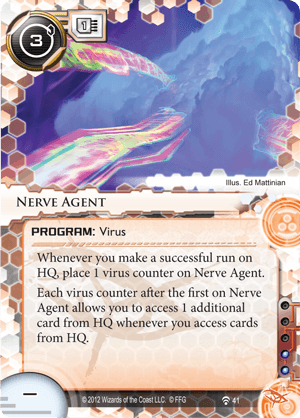
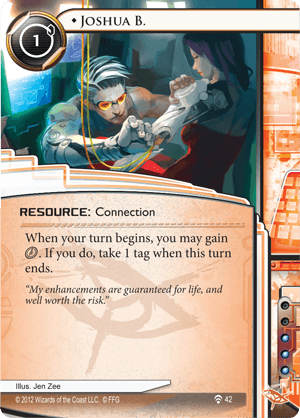
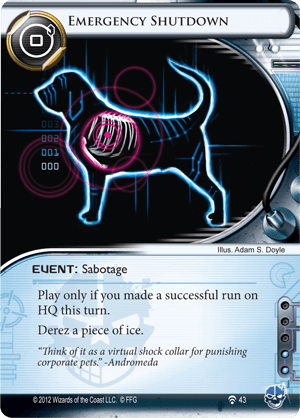
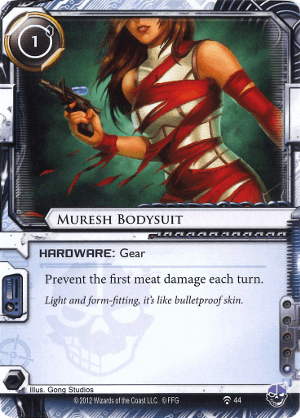
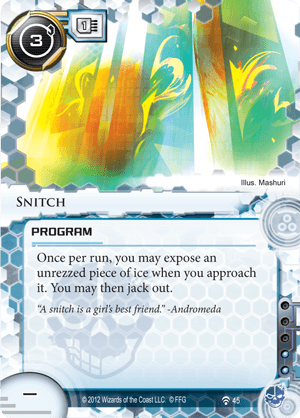
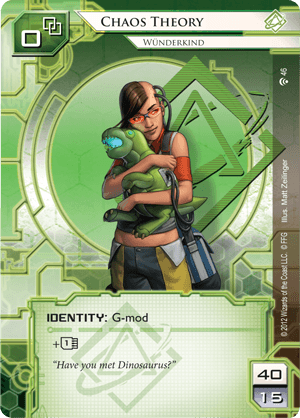
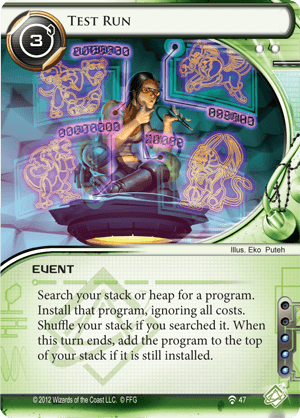

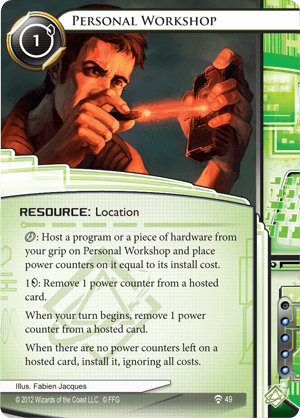
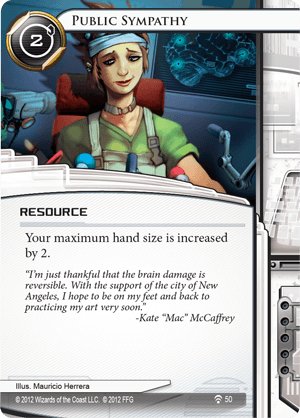
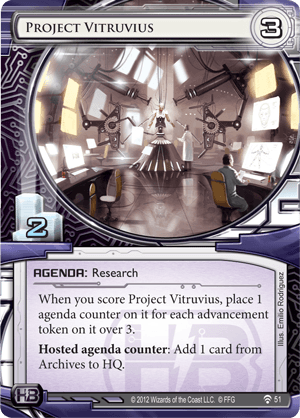
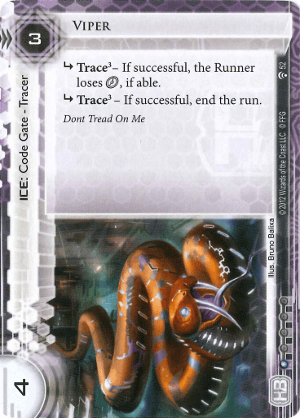
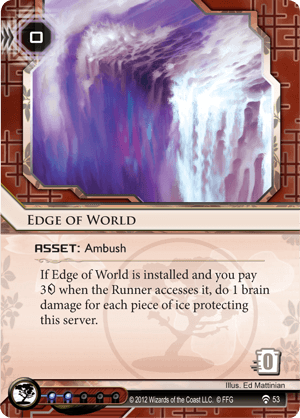
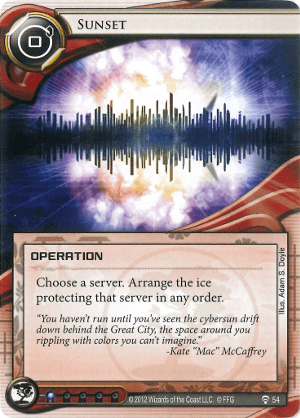
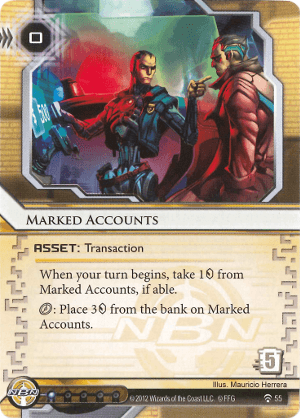
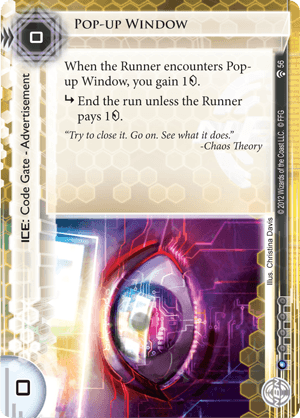
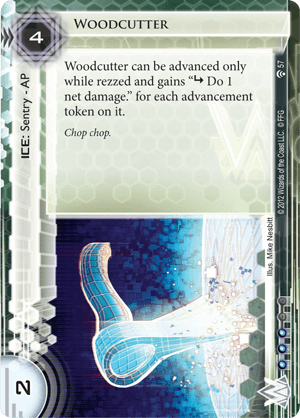
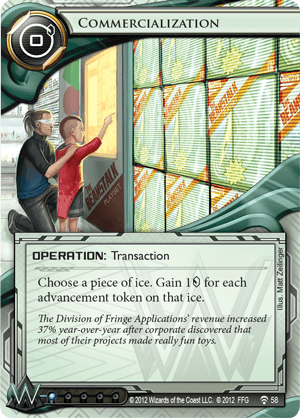
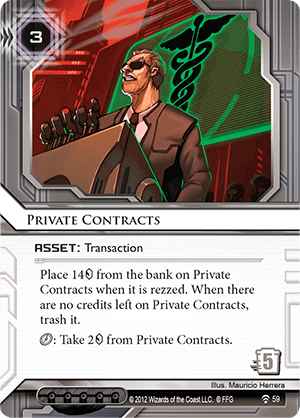
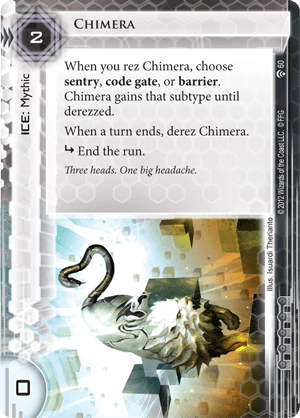
No comments:
Post a Comment